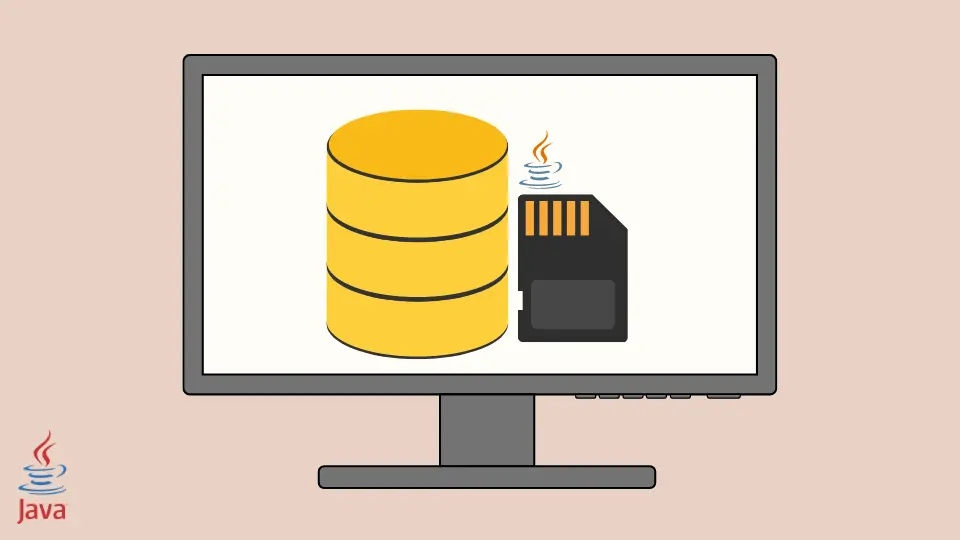Java 中的内存缓存

本教程将讨论我们可以在 Java 中用于内存缓存的两个库。
在 Java 中使用 Guava 库进行内存缓存
从 API 或数据库中获取数据时,如果我们希望频繁访问它,那么在需要时获取相同的数据可能会很昂贵。缓存变得很有用,因为它可以保存经常需要的数据,以便以后轻松访问。
为了在我们的项目中包含 Guava 库,我们使用以下 Maven 依赖项。
<dependency>
<groupId>com.google.guava</groupId>
<artifactId>guava</artifactId>
<version>31.0.1-jre</version>
</dependency>
例子:
import com.google.common.cache.CacheBuilder;
import com.google.common.cache.CacheLoader;
import com.google.common.cache.LoadingCache;
import java.util.concurrent.ExecutionException;
import java.util.concurrent.TimeUnit;
public class ExampleClass1 {
private final LoadingCache<String, String> loadingCache;
public ExampleClass1() {
final CacheLoader<String, String> loader = new CacheLoader<>() {
@Override
public String load(String key) {
return key.toUpperCase();
}
};
loadingCache = CacheBuilder.newBuilder()
.maximumSize(1500)
.expireAfterAccess(15, TimeUnit.MINUTES)
.build(loader);
}
public static void main(String[] args) throws ExecutionException {
ExampleClass1 cacheExample = new ExampleClass1();
cacheExample.loadingCache.put("key1", "value1");
cacheExample.loadingCache.put("key2", "value2");
System.out.println("Whole cache as map: " + cacheExample.loadingCache.asMap());
System.out.println("Get a single value using a key: " + cacheExample.loadingCache.get("key1"));
}
}
输出:
Whole cache as map: {key1=value1, key2=value2}
Get a single value using key: value1
我们使用上面代码中键和值的类型参数创建了一个 LoadingCache 实例。在构造函数中,我们重写了计算和检索值的 CacheLoader 类的 load() 函数。
我们称 CacheBuilder 为 LoadingCache 的构建器。我们也调用 newBuilder() 方法。将缓存可以包含的最大值数和缓存的过期时间设置为访问后的 15 分钟。
然后我们用 loader 实例调用 build() 方法。为了从缓存中插入和获取数据,我们在 main() 方法中创建 ExampleClass1 的对象,并调用 put() 方法以键值对格式插入值。
我们可以使用 asMap() 方法将整个缓存作为地图获取,并且要从其键中获取单个值,我们使用 get() 函数并将键作为其参数。
在 Java 中使用 EhCache 库进行内存缓存
对于此示例,我们使用另一个名为 EhCache 的缓存库,我们可以使用以下 Maven 依赖项将其包含在项目中。
<dependency>
<groupId>org.ehcache</groupId>
<artifactId>ehcache</artifactId>
<version>3.9.6</version>
</dependency>
例子:
import org.ehcache.Cache;
import org.ehcache.CacheManager;
import org.ehcache.config.builders.CacheConfigurationBuilder;
import org.ehcache.config.builders.CacheManagerBuilder;
import org.ehcache.config.builders.ResourcePoolsBuilder;
public class ExampleClass1 {
public static void main(String[] args) {
CacheManager cacheManager = CacheManagerBuilder.newCacheManagerBuilder()
.withCache("exampleCache",
CacheConfigurationBuilder
.newCacheConfigurationBuilder(String.class,
String.class, ResourcePoolsBuilder.heap(50))
.build())
.build(true);
Cache<String, String> cache = cacheManager.getCache("exampleCache", String.class, String.class);
cache.put("First Name", "Sam");
cache.put("Last Name", "Maxwell");
String getFirstNameFromCache = cache.get("First Name");
String getLastNameFromCache = cache.get("Last Name");
System.out.println("First Name: " + getFirstNameFromCache);
System.out.println("Last Name: " + getLastNameFromCache);
cacheManager.close();
}
}
输出:
[main] INFO org.ehcache.core.EhcacheManager - Cache 'exampleCache' created in EhcacheManager.
First Name: Sam
Last Name: Maxwell
[main] INFO org.ehcache.core.EhcacheManager - Cache 'exampleCache' removed from EhcacheManager.
正如我们所见,我们调用了 CacheManagerBuilder 类的 newCacheManagerBuilder() 方法。然后我们调用 withCache() 方法参数;第一个参数是缓存的别名,第二个参数是 CacheConfiguration 类型的缓存的配置。
我们使用 CacheConfigurationBuilder.newCacheConfigurationBuilder() 方法配置缓存,在该方法中我们传递键和值的类型。然后我们通过调用它的 build() 方法的堆大小。
最后,我们调用 CacheManagerBuilder 类的 build() 方法并传递 true,因为它的参数返回 CacheManager 的实例。
一旦设置了管理器,我们调用 getCache() 方法并传入别名和键值类型以获取返回 Cache 的缓存并带有类型参数。我们调用 put() 方法使用缓存对象以键值对的形式将值插入缓存。
我们使用 get() 方法从缓存中获取值。最后,我们关闭 cacheManager 以完成流。
Rupam Saini is an android developer, who also works sometimes as a web developer., He likes to read books and write about various things.
LinkedIn